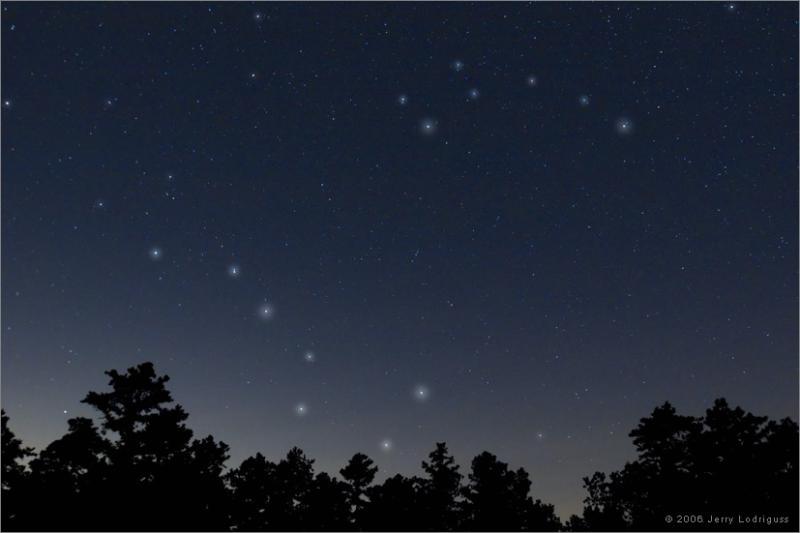
|
Credit & Copyright: Jerry Lodriguss
(Catching the Light)
Explanation:
Do you see it?
This common question frequently precedes the rediscovery of one of the most commonly
recognized configurations of stars on the northern sky: the
Big Dipper.
This grouping of stars is one of the few things that has likely been seen, and will
be seen, by
every generation.
The Big Dipper is not by itself a
constellation.
Although part of the constellation of the Great Bear (Ursa Major), the
Big Dipper is an
asterism
that has been known by different names to different societies.
Five of the
Big Dipper stars are actually near each other in
space and were likely formed at nearly the same time.
Connecting two stars in the far part of the Big Dipper will lead one to
Polaris, the North Star, which is part of the
Little Dipper.
Relative stellar motions will cause the
Big Dipper to slowly change its
apparent
configuration over the next 100,000 years.
|
January February March April May June July August September October November December |
| ||||||||||||||||||||||||||||||||||||||||||||||||
NASA Web Site Statements, Warnings, and Disclaimers
NASA Official: Jay Norris. Specific rights apply.
A service of: LHEA at NASA / GSFC
& Michigan Tech. U.
Based on Astronomy Picture
Of the Day
Publications with keywords: Big Dipper - asterism
Publications with words: Big Dipper - asterism
See also:
